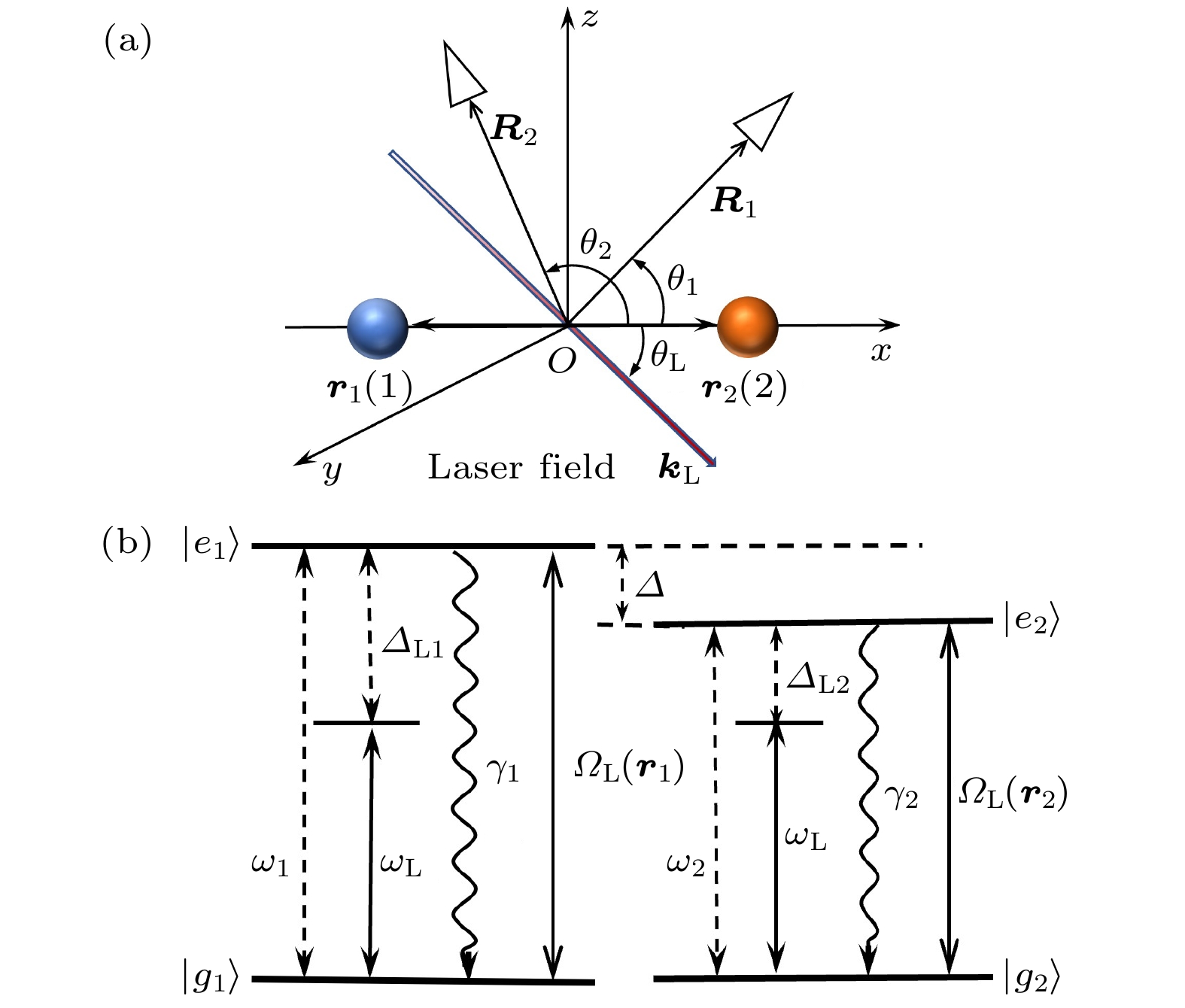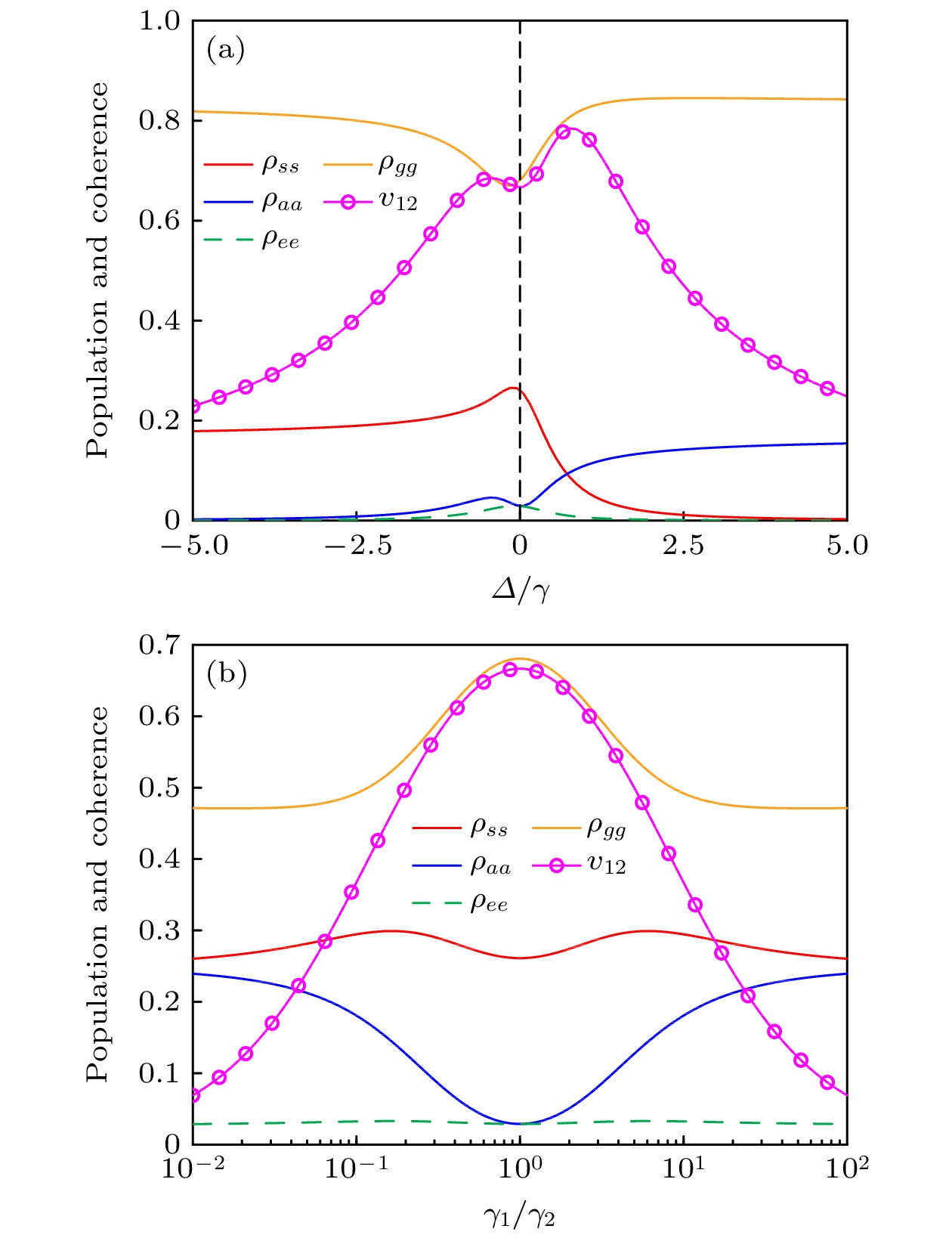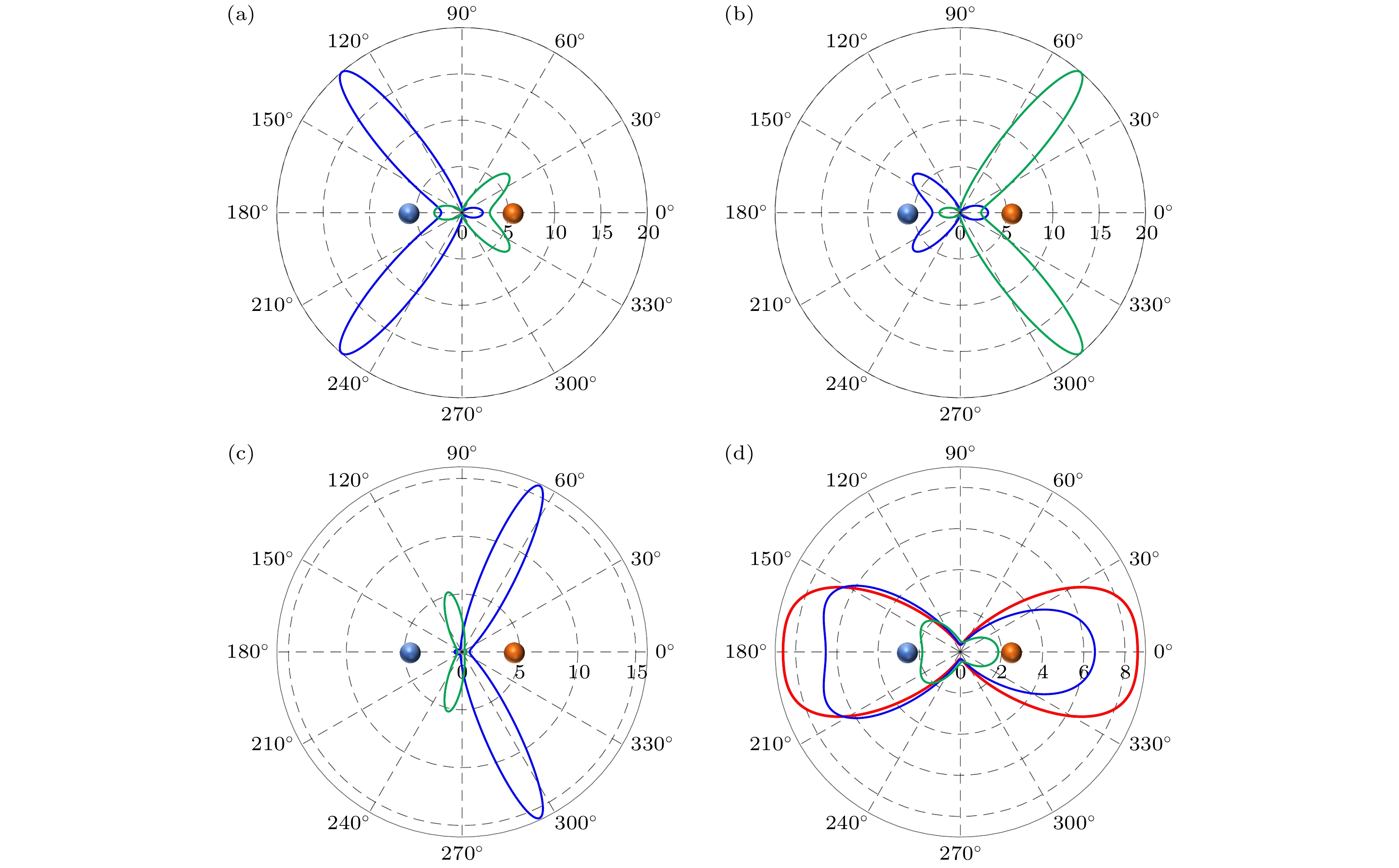In recent years, the radiative properties of atomic systems have been a hot topic in the research fields of quantum optics and quantum information. With the continuous development of nanophotonics, quantum antennas have become an important model for studying atomic radiation. In order to investigate these phenomena in depth, we investigate a system composed of two two-level atoms, and study the two-photon emission phenomenon of diatomic system under conditions of driving directional tunable laser field, interatomic dipole-dipole interaction, and spontaneous emission coherence.
In this study, we diagonalize the atomic Hamiltonian to obtain the eigenvalues and entangled states of the system (symmetric and asymmetric states of two atoms), and use the rotating wave approximation to rotate the system into the laser frame. The evolution of the system is characterized mainly by the evolution of symmetric and asymmetric state, as well as the evolution of coherent terms. In our studies it is found that for identical atoms, certain laser directions and geometric configurations can exclusively drive the superradiant and subradiant states of atoms, which can enhance the first-order interference effect of the atoms and markedly increase the probability of two-photon emission in a specific detection direction. When the superradiant state of the atom is solely driven, there will be no coupling between the superradiant state and subradiant state, resulting in a correlation function angular distribution that is symmetric along the direction perpendicular to atomic axis. Further adjusting the laser direction causes the atomic interference patterns to shift, and the system will exhibit two-photon emission characteristics on one side or both sides.
For nonidentical atomic systems, due to detuning between the two atoms, the laser cannot drive the superradiant state or subradiant state individually, and the influence of changing the laser direction on the coupling strength diminishes with the increase of detuning between the atoms. When the laser is in resonance with one of the atoms, due to the atomic interactions, the other atom can achieve the strongest coherent effect without resonating with the laser. This research reveals that atomic detuning is crucial for the correlation values and angular distribution of the correlation function. By adjusting the atomic detuning and laser direction, the system can display highly directed one-sided two-photon emission characteristics. However, different dissipation rates will lead the probability of two-photon emission to decrease. Our studies can achieve highly directional two-photon emission on one side or both sides, which provides a theoretical basis for studying the two-photon emission of nanoantennas.














 下载:
下载:





